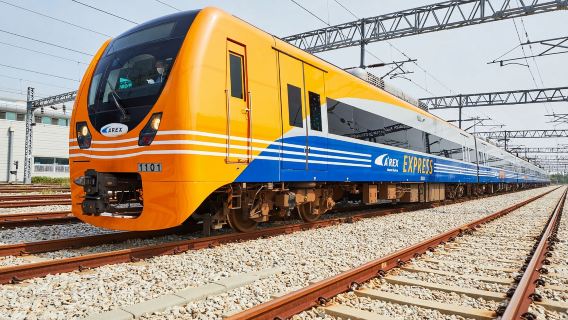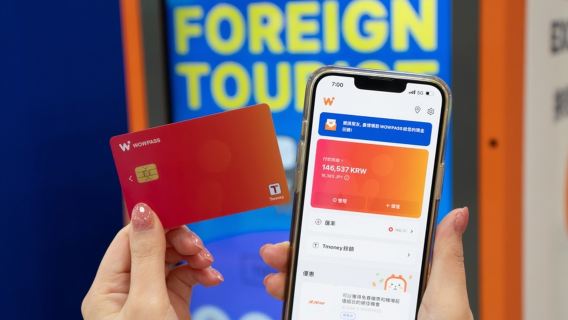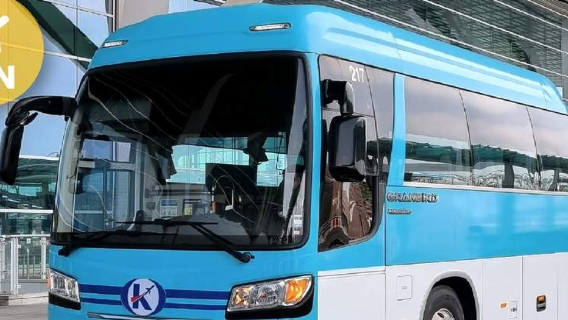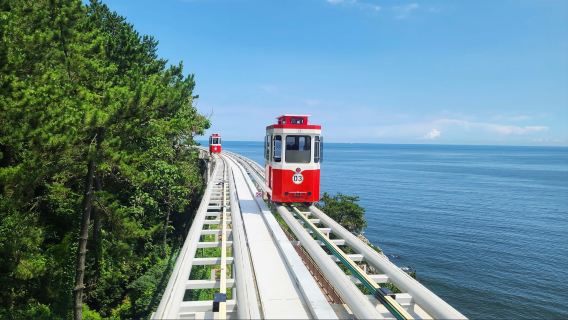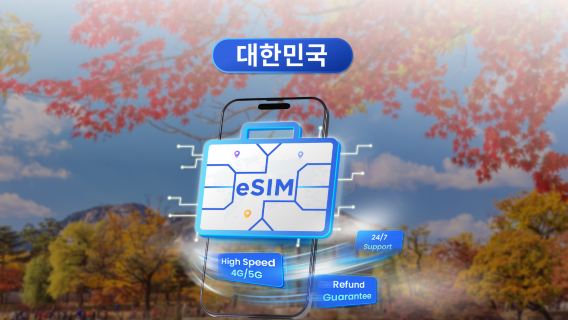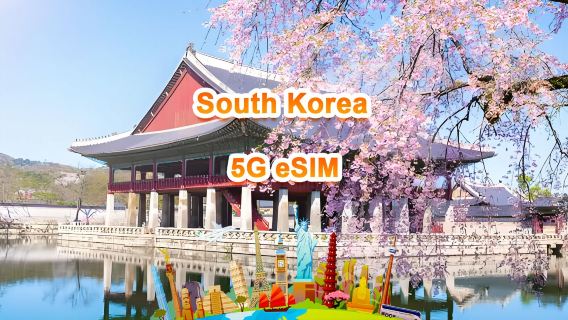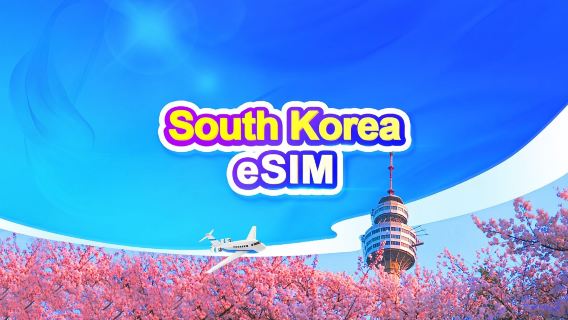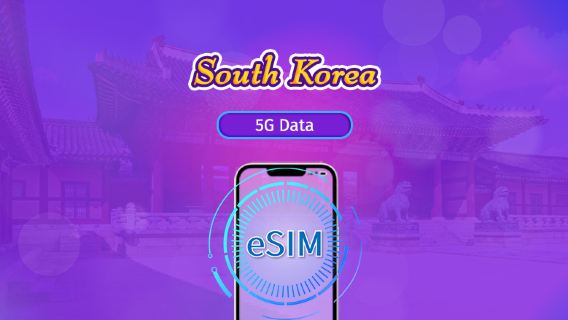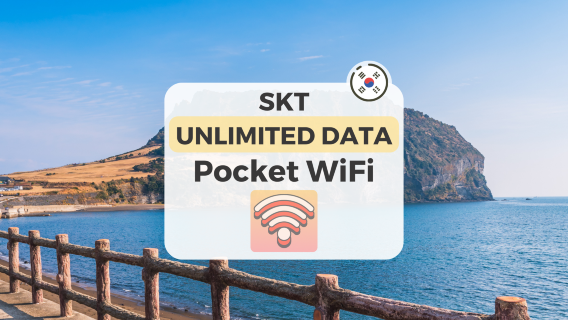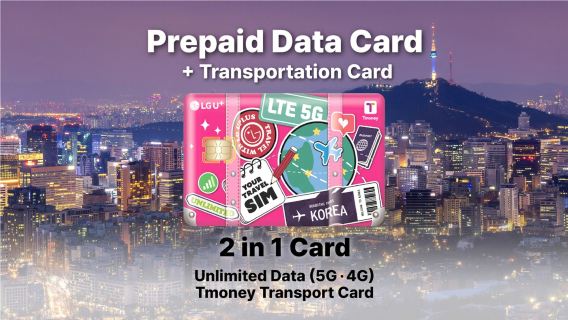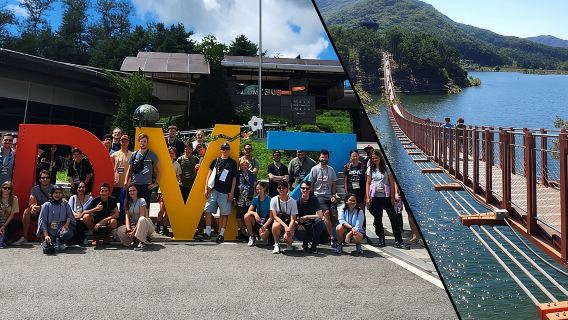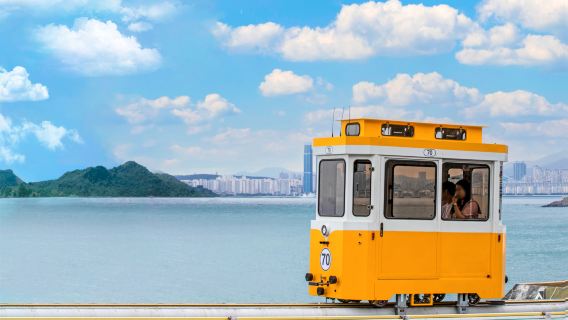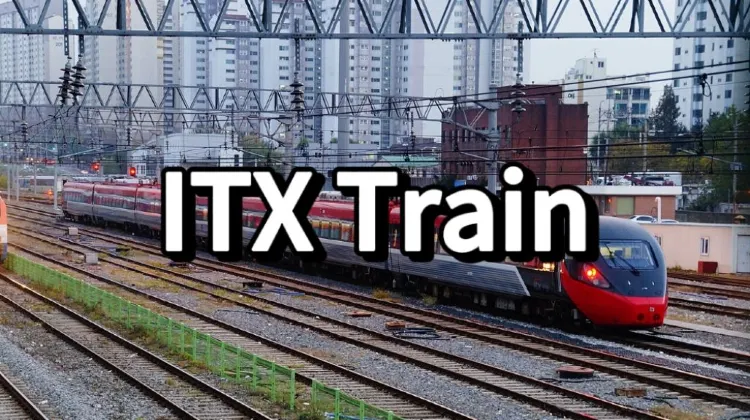
While the KTX is the fastest in the country, ITX trains also provide quick travel with speeds around 165 km/h. ITX trains offer spacious seating, large windows, free Wi-Fi, and ample legroom. Learn about ITX routes, compare them with KTX services, and find out why ITX trains are a great choice for your Korea trip. 🚆
🔥Exclusive South Korea Train Coupon: Get 10% OFF Now!
Book KTX train tickets as a new user on Trip.com App and enjoy a special 10% Off 🎁! Use our exclusive coupon to save big on your first trip in South Korea!!!👀
✨ Trip.com is the only overseas provider for KTX✨
What is ITX train?
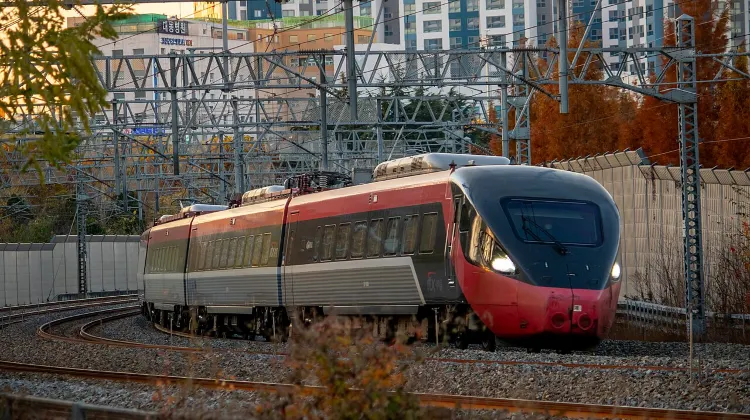
Source from Wikipedia
The ITX (Intercity Train eXpress) is a class of higher-speed trains operated by Korail. The ITX trains in South Korea include three main types: ITX-Cheongchun, ITX-Saemaeul, and the newest addition, ITX-Maum.
ITX-Saemaeul
Introduced on May 12, 2014, the ITX-Saemaeul train serves as a faster, more modern version of the older Saemaeul-ho trains. It is one of the fastest intercity trains in South Korea. (second fastest only slower than the high-speed KTX trains)
The ITX-Saemaeul operates at an average speed of 150 km/h but can reach speeds up to 165 km/h on certain routes. The trains are designed with a modern aesthetic and are equipped with enhanced features such as spacious seating, panoramic windows, and advanced safety systems.
The ITX-Saemaeul connects major cities and regions in South Korea, including routes such as Seoul to Busan, Yongsan to Gwangju, and other key destinations. It offers both standard and first-class accommodations, with amenities including comfortable seating, ample legroom, power outlets, and access to vending machines for snacks and drinks.
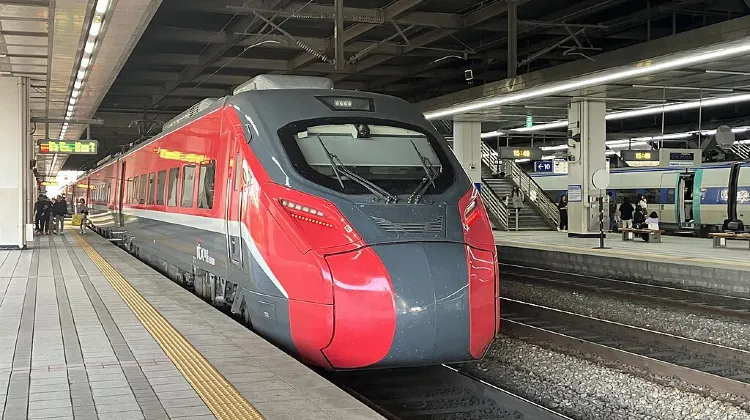
Source from Wikipedia
ITX-Maum
Launched in 2023, ITX-Maum is the latest addition to South Korea's intercity express trains. Operated by Korail, it represents a significant upgrade in terms of comfort and efficiency for passenger rail transport.
ITX-Maum trains can reach speeds of up to 150 km/h. These trains are distinguished by their advanced features, including environmentally friendly aluminum construction, retractable steps for gap-free boarding, and modern passenger amenities. The trains provide a comfortable and accessible travel environment with facilities such as panoramic windows in tourist carriages, barrier-free toilets, and ample seating designed to enhance the passenger experience.
Currently, ITX-Maum services major routes like the Gyeongbu and Honam lines and plans to expand to other lines such as Cholla and Taebaek by 2028. This expansion is part of Korail's strategy to provide comprehensive rail coverage throughout South Korea, connecting more destinations with reliable and comfortable intercity transport options.
ITX-Cheongchun
The ITX-Cheongchun, Korea's first double-decker express train, began operation in February 2012. It's designed to connect Seoul with Chuncheon in Gangwon-do, efficiently covering the distance in about an hour. This train makes it especially convenient for travelers headed to Chuncheon and Nami Island.
The ITX-Cheongchun departs from both Yongsan Station and Cheongnyangni Station in Seoul, stopping at intermediate stations like Gapyeong before reaching its final destination in Chuncheon. Its unique double-decker design offers second-floor seating at no additional cost, enhancing the travel experience without raising the price.
South Korea Transport Cards
Some useful Korea transport cards/tickets You might need in South Korea😆
ITX VS. KTX
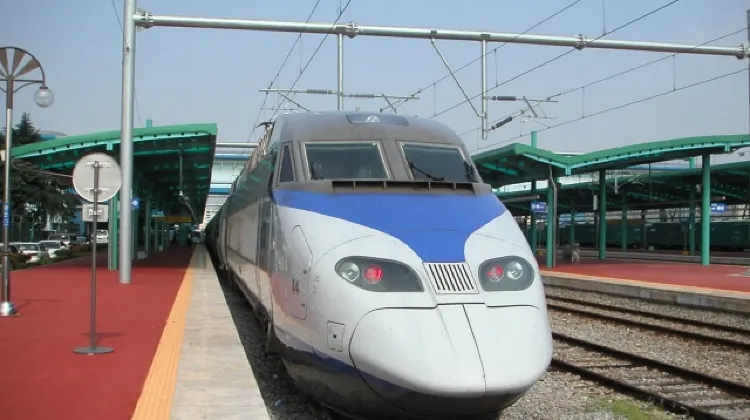
KTX: Known for its high speed, the KTX is ideal for long-distance travel between major cities, reducing the Seoul to Busan travel time to just over two hours. It's the fastest mode of rail transport in Korea, with premium pricing reflective of its speed and amenities.
ITX: While not as fast as the KTX, the ITX offers a more leisurely pace which might be preferred by those looking to enjoy the ride with more stops at smaller stations. It is often more comfortable due to the additional legroom and generally caters to more budget-conscious travelers.
| Feature | KTX | ITX |
| Operating Company | Operated by Korail | |
| Base Station | Seoul Station, with routes extending nationwide | Yongsan Station and Cheongnyangni Station for ITX-Cheongchun |
| Speed | Up to 305 km/h | Up to 165 km/h |
| Major Routes | Seoul to Busan (~2 hours 15 minutes) | Seoul to Chuncheon (~1 hour) |
| Seating | Offers First and Economy class; seats are adjustable | Mainly Economy class; fixed seats with more legroom |
| Additional Amenities | Wi-Fi available on all trains, power outlets at each seat | Wi-Fi available, fewer power outlets |
| Station Connectivity | High connectivity with major urban centers | Better connectivity to smaller, regional destinations |
💖If you're curious about how to stay connected in South Korea, check our South Korea eSIM, Wifi and SIM card!
Popular ITX Routes
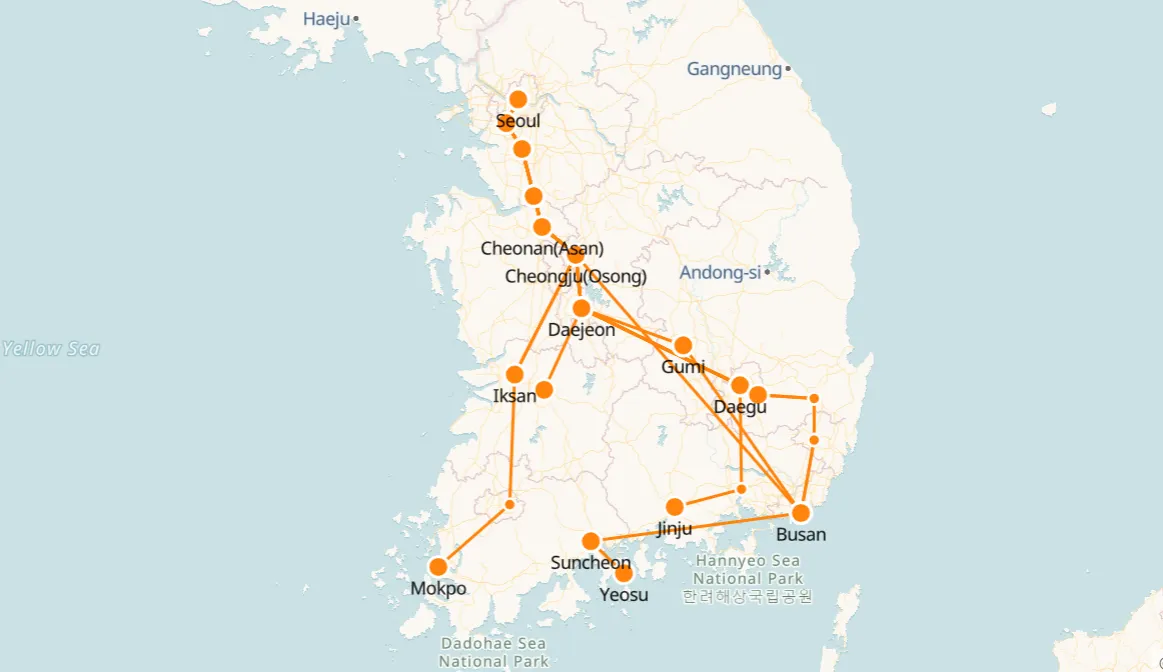
| Route Name | Starting Point - Ending Point | Frequency of Operation | Journey Time | Key Destinations |
| Gyeongbu Line | Seoul - Busan | 7 times a day | About 4 hours 30 minutes | Connects Seoul to Busan, facilitating travel between the north and south of Korea. |
| Donghae Line | Seoul - Sinhaeundae | Weekdays: 1 time a day<br>Saturdays and Sundays: 2 times a day | About 4 hours 50 minutes | Connects Seoul to eastern coastal regions like Sinhaeundae, enhancing access to coastal destinations. |
| Gyeongjeon Line | Seoul - Jinju | 2 times a day | About 5 hours 20 minutes | Links Seoul with southwestern cities like Jinju, traversing through Changwon. |
| Honam Line | Yongsan - Mokpo | 2 times a day | About 4 hours 30 minutes | Connects Yongsan to Mokpo, serving western and southwestern areas including Gwangju. |
| Gwangju Line | Yongsan - Gwangju | 4 times a day | About 4 hours | Provides frequent connections to Gwangju, supporting regional travel within southwestern Korea. |
| Jeolla Line | Yongsan - Yeosu Expo | 2 times a day | About 4 hours 30 minutes | Runs from Yongsan to Yeosu, facilitating access to the southern coastline and Yeosu Expo. |
What is SRT?
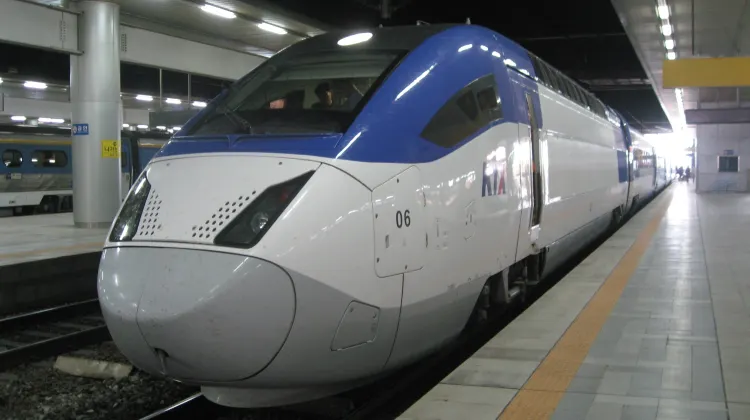
The SRT (Super Rapid Train) in Korea is a high-speed train service that began operations in December 2016. It was introduced to provide a faster alternative to the KTX, especially for routes connecting Seoul to major cities in the southern parts of the country.
- Train Configuration: The SRT is configured as a 10-car train stretching 201 meters in length and 2.97 meters in width. It has a total seating capacity of 410, designed to offer more spacious seating than the KTX.
- Amenities: All seats are aligned in the direction of travel, and the train includes special seats for disabled passengers, toilets, nursing rooms, and diaper changing stations, enhancing its accessibility and convenience for all passengers.
Key Routes
- Primary Routes: The SRT primarily connects Suseo Station in southeastern Seoul to major cities like Daegu, Gyeongju, Busan, and Gwangju. It’s known for its cost-effectiveness compared to the KTX, making it popular among travelers, including those from Japan.
- Popular Stations:
- Suseo Station: Acts as a transportation hub in Seoul, linking with multiple subway lines and providing easy access to the Eastern Highway.
- Jije Station (Pyeongtaek): Serves as a critical transport hub in the southern Gyeonggi region, expected to become a center for international business and advanced industry development.
- Dongdaegu Station: The main transport hub in Daegu, connected to several high-speed train lines and surrounded by extensive commercial facilities.
- Daejeon Station: A major node not only for the SRT but also for various regional train and bus services, featuring modern facilities and a range of nearby commercial and cultural offerings.
How to Use the SRT
- Boarding Process: The SRT employs a "credit boarding" system, meaning there are no automated gates at stations, and no ticket checks by station staff. Passengers can head straight to the departure platform.
- Onboard Experience: Once onboard, check your ticket for your car and seat number, enjoy amenities like power outlets, reclining seats, and free Wi-Fi.
- Disembarking: Exiting the train is straightforward as there are no ticket barriers, allowing passengers to keep their tickets as souvenirs.
Comparison with KTX
- Operator: While both the KTX and SRT are high-speed trains, KTX is operated by Korail across the country, and SRT is managed by SR, a subsidiary of Korail, operating mainly out of Suseo Station in Seoul’s Gangnam area.
- Pricing and Comfort: SRT fares are generally about 10% cheaper than those of KTX. SRT offers wider seats with power outlets at each seat and free Wi-Fi on all vehicles.
Explore South Korea by ITX train
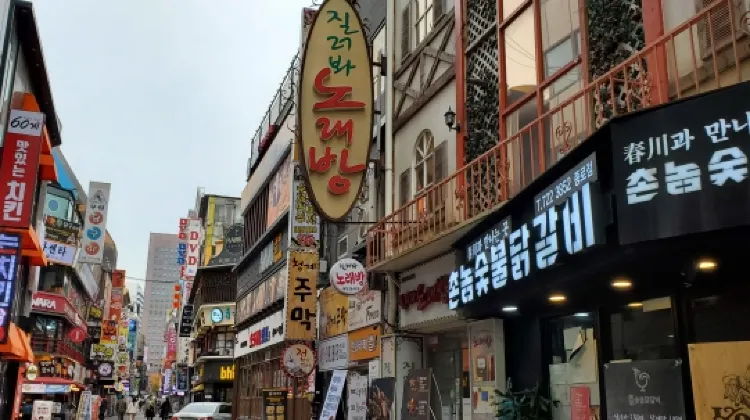
Traveling around South Korea by ITX train is a great way to see the country. The ITX service connects major and smaller cities, making it easy to plan trips whether you're headed to popular destinations or exploring off the beaten path.
Booking your ITX train tickets is straightforward with Trip.com, which provides a clear, step-by-step process and digital tickets. This site is also the only overseas agent for the Korea Railroad Corporation, offering reliable service. Plus, you can often find discounts like a 10% off coupon for your travel.
💖If you're curious about how to buy and use Korail train tickets, check the following articles to learn more:
Best Things to Do in South Korea
Discover the best of South Korea with a KTX ticket from Trip.com—now 10% off!
Explore a variety of tours easily accessible by train, and enjoy great deals and discounts on your Korea trip.
FAQs about ITX
What is the ITX train?
The ITX (Intercity Train Express) train is a class of high-speed trains operating in South Korea that provide efficient transportation between major cities and regions outside the more heavily urbanized zones served by the KTX (Korea Train eXpress) system. ITX services include the ITX-Cheongchun and ITX-Saemaeul. The ITX-Cheongchun operates on the Gyeongchun Line, connecting Seoul to Chuncheon, while the ITX-Saemaeul, which replaced older Saemaeul trains, serves longer routes with fewer stops compared to conventional services. These trains are designed to offer a comfortable and quicker alternative to traditional train services, featuring amenities like spacious seating and modern interiors.What is the difference between ITX and KTX trains?
The ITX (Intercity Train Express) and KTX (Korea Train eXpress) trains are both integral parts of South Korea's rail network but cater to different aspects of travel needs. The KTX is South Korea's flagship high-speed service, primarily focusing on connecting major metropolitan areas across the country with speeds up to 305 km/h, offering fast travel times. In contrast, ITX trains serve as a semi-high-speed option, designed to connect smaller cities and regions not covered by the KTX. ITX trains typically operate at lower speeds than KTX, have more stops, and focus on comfort over sheer speed, making them more suitable for intermediate distances.How fast is the ITX train?
The ITX train's speed varies depending on the specific service. For instance, the ITX-Cheongchun can reach speeds of up to 180 km/h, which allows it to complete the journey from Yongsan in Seoul to Chuncheon in roughly one hour and twenty minutes. This makes it significantly faster than conventional trains on the same route but slower than the KTX trains. The ITX-Saemaeul, which serves other routes, also operates at similar maximum speeds. These speeds are adequate to reduce travel times significantly compared to older models of trains while providing an efficient service for those not served by the high-speed KTX lines.

 65161 booked
65161 booked